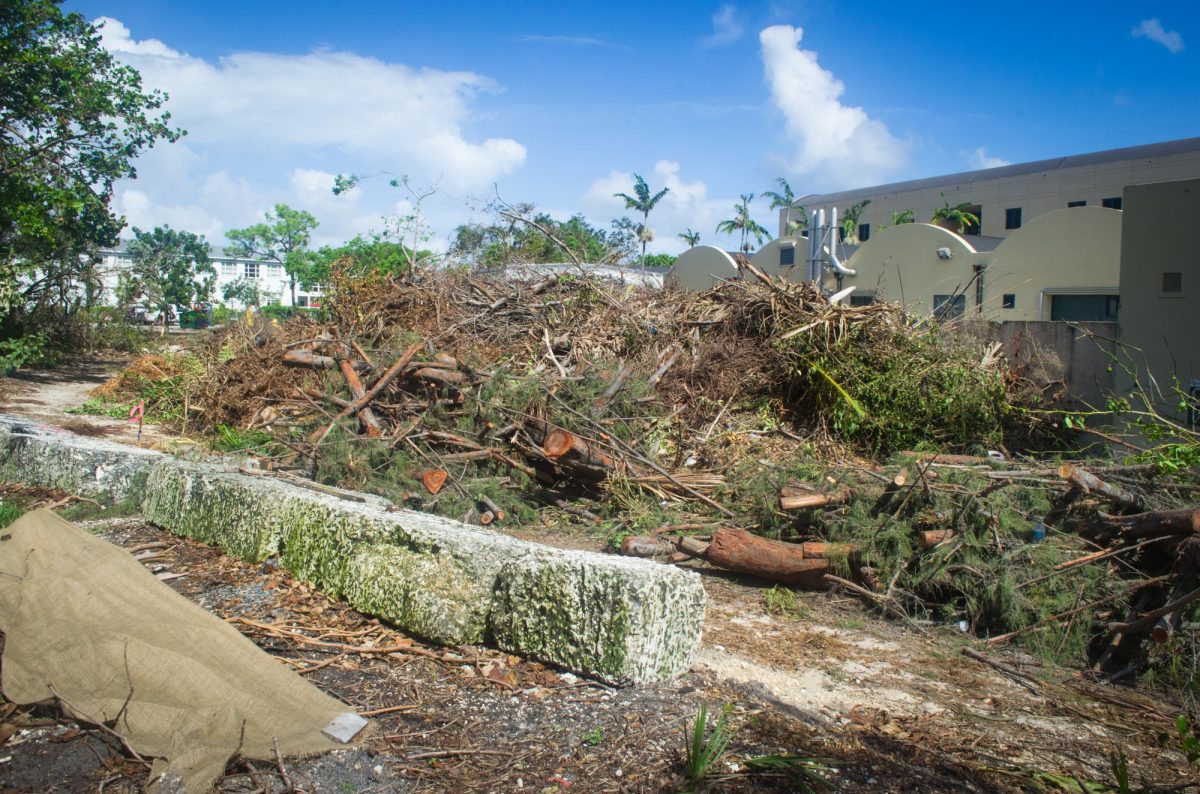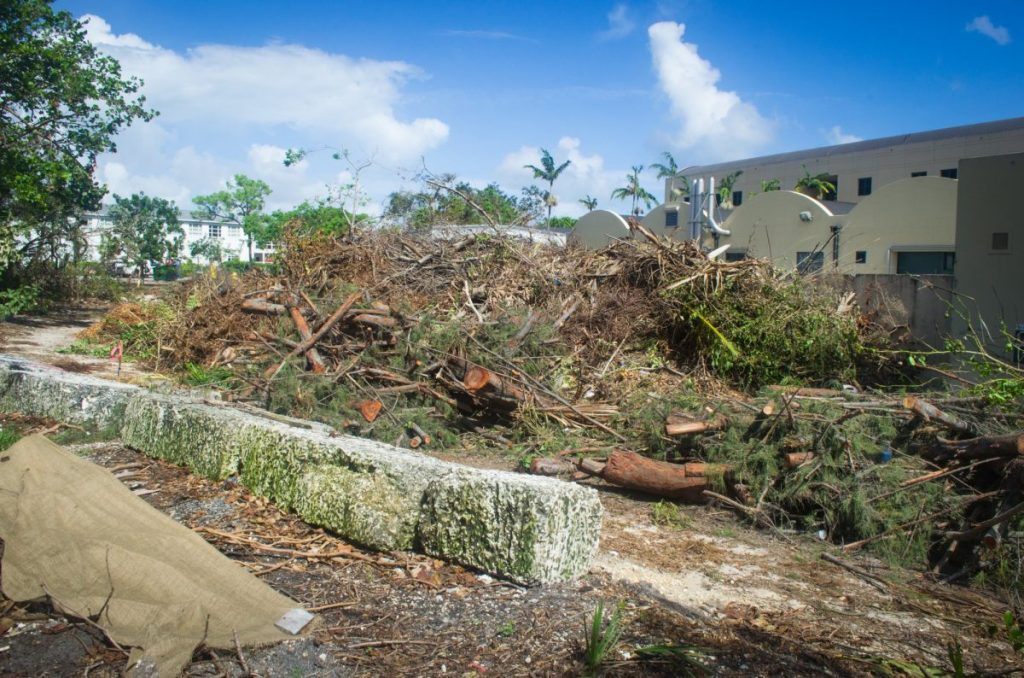

The grand trees and familiar landscaping on campus were hit particularly hard by Hurricane Irma, with broken limbs, leaning trunks and uprooted trees. However, not all the damage caused to the John C. Gifford Arboretum, a living museum of trees and home to many exotic species, was natural.
Steve Pearson, director of the arboretum for six years, said in the aftermath of Hurricane Irma the university made an effort to clear campus as quickly as possible for accessibility and safety reasons. He said during the process many healthy trees were needlessly chopped in order to get to fallen ones.
“Unfortunately, there wasn’t much coordination with facilities; that was one of the problems,” Pearson said. “An additional problem was that I was not even allowed back on campus. I had to fight to get back into the arboretum.”
Although wind speeds were lower than they could have been during the hurricane and minimal damage was caused to buildings, the sheer number of hours that trees had to endure Irma’s winds devastating many plant species.
Pearson said that Hurricane Irma did “terrible damage” to the arboretum, killing about 15 species. The trees in the arboretum are generally much more sensitive to stress than the hardier landscaping on the rest of campus.
The arboretum features hundreds of tree and shrub species from every continent, except Antarctica. First planted in 1947, the living laboratory has survived some of the worst hurricanes to pass through South Florida, including hurricanes Andrew, Wilma and Katrina.
“You know, storms are going to happen,” Pearson said. “The frustration to me is that we lost many things just to expediency and carelessness that could have been saved.”
The first day Pearson was allowed back on campus, he said he saw crews killing six or seven species that could have been saved to speed up clean up. Days later, after Pearson had been working with his own crews to clear badly damaged plants and salvage others, another crew came and wreaked more havoc, he said.
There was an effort to clear the roads to give access to emergency personnel, so fallen trees and limbs were dumped on healthy arboretum trees, further damaging them, Pearson said.
Larry Marbert, vice president of real estate and facilities, walked three miles from his home to campus to do the initial damage assessment after Irma because his road was blocked.
Marbert said San Amaro area near the arboretum was identified as a top priority in that assessment because it was completely impassable, blocking access to a large section of campus. Safety and accessibility were the primary goals of the entire storm recovery process, Marbert said.
Pearson said he would have preferred if the limbs were moved to the empty parking lots, as most of the university community ha not returned to campus, or to the nearby dump behind the arboretum, instead of pushing the trees into areas that border roads.
Pearson said that he was excluded from some of the decision-making process and surprised when crews hired by facilities came to clear trees.
Marbert said they made a point to include Pearson’s expertise.
“We also worked directly with the academic departments that curate and are the stewards of the arboretum, and they literally sort of stood shoulder-to-shoulder with the vendors that were working in the arboretum,” Marbert said.
Moving forward, Pearson said he hopes they can directly replace many of the lost trees. Although that may not be possible for some of the rarest species from Africa and Asia, Pearson had some of the more tender arboretum species growing in his personal garden as backups. He also hopes FEMA will provide funds to remedy some of the damage.
Facilities continues to work on assessments and will begin to develop a restoration plan for the lost landscaping. Despite the damage, Marbert said he sees opportunities for improvement in the area through the planned arboretum expansion.
“Hurricanes are going to happen here, but the positive side to it is I look at it as an opportunity to improve your collection,” Pearson said.






